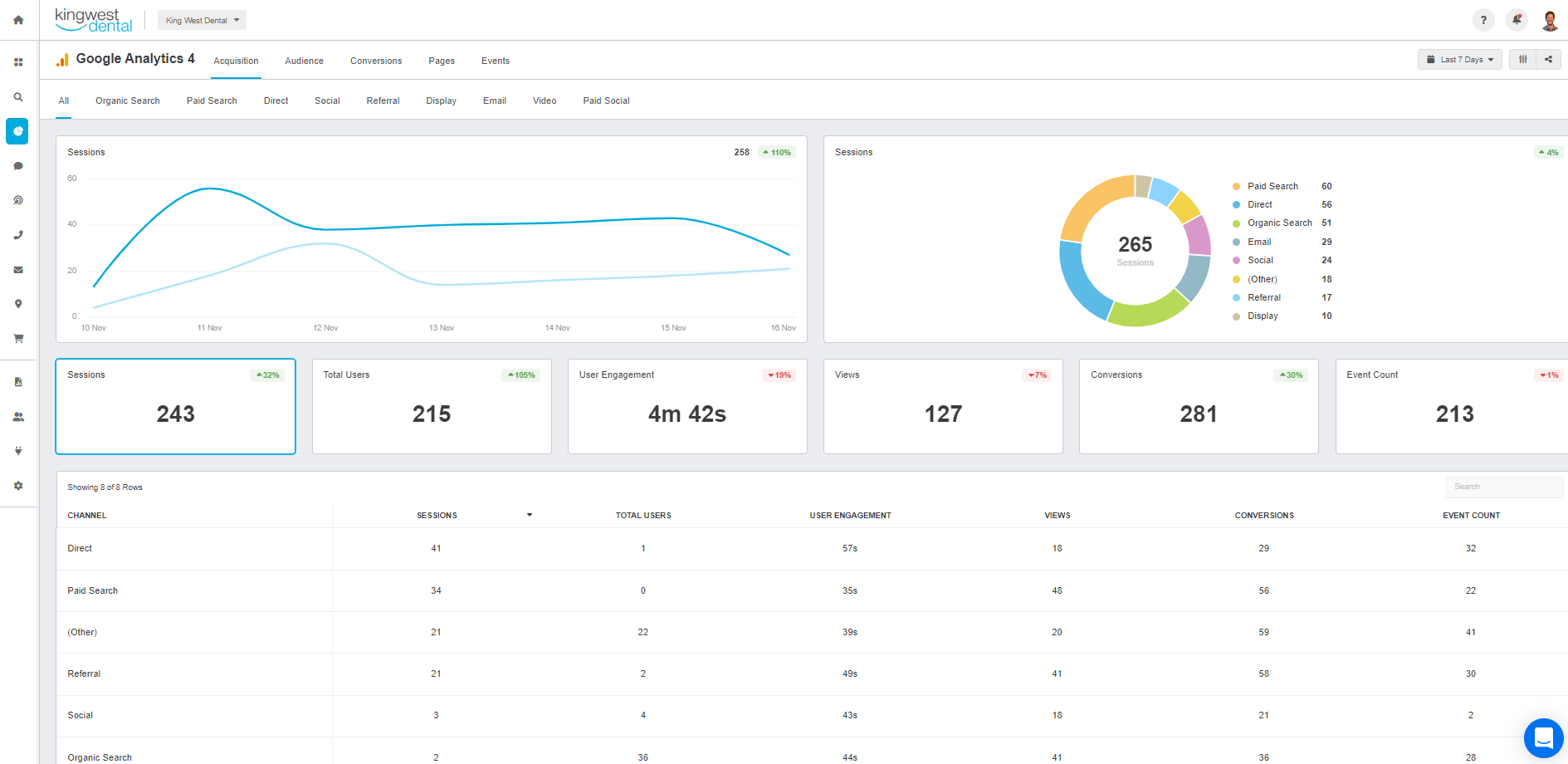Navigating the Midst of Additional Measurement in Google Analytics: A Comprehensive Exploration on Its Performance
Second measurements, though relatively straightforward at very first glimpse, harbor a wide range of untapped potential waiting to be used. As we get started on this journey to explore the nuanced capability of secondary dimensions, we will certainly discover how this attribute can brighten patterns, unveil correlations, and inevitably pave the means for educated decision-making in the digital landscape (what is a “secondary dimension” in google analytics?).
Recognizing Secondary Dimensions in Google Analytics

Comprehending exactly how secondary dimensions job is important for leveraging the full power of Google Analytics. By incorporating key metrics with secondary dimensions, you can acquire valuable insights that drive educated decision-making and optimization strategies.
Leveraging Second Measurements for Information Analysis
Building upon the fundamental understanding of exactly how additional dimensions enhance data evaluation in Google Analytics, the utilization of these extra layers of details becomes extremely important in drawing out important insights for notified decision-making and optimization strategies. By leveraging additional measurements, analysts can dive much deeper right into the performance metrics by adding more context to the primary measurements, therefore uncovering hidden patterns and correlations that might not be evident in the beginning glance. This much deeper level of evaluation makes it possible for organizations to much better understand user actions, recognize fads, and pinpoint locations for renovation.
Additionally, second measurements offer an even more detailed view of the data, enabling segmentation based upon various parameters such as demographics, devices, traffic sources, and extra. This segmentation promotes a much more granular evaluation, allowing businesses to customize their campaigns and methods to details audience sections for enhanced targeting and personalization. Basically, the strategic use of additional dimensions encourages companies to make data-driven choices that drive growth and success in the electronic landscape.
Advanced Methods for Second Dimension Implementation
Exploring complex techniques to harness the full capacity of second dimensions in Google Analytics boosts the depth and sophistication of data evaluation for tactical decision-making. One innovative technique for applying additional dimensions is the use of custom-made dimensions. In addition, incorporating continue reading this second measurements with sophisticated sectors can offer even extra granular understandings by applying multiple layers of segmentation to the data.
Interpreting Insights With Additional Measurements

When analyzing understandings through secondary measurements, it is vital to think about the context of the data and exactly how different measurements communicate with each various other. For instance, understanding which details website traffic resources cause higher conversion prices or determining which devices customers like for making acquisitions can give workable understandings for optimizing advertising and marketing campaigns and boosting overall site performance. By carefully taking a look at the information with second dimensions in mind, companies can make educated decisions that drive purposeful outcomes and boost their electronic visibility.
Optimizing Performance With Additional Dimensions

One key method to maximize performance with additional measurements is by segmenting data much more granularly. This enables you to isolate details factors that might be affecting your metrics and acquire a much better understanding of what drives success or failing in your electronic campaigns. As an example, by combining additional measurements such as 'tool category' more information and 'touchdown web page,' you can identify which tool kinds are most reliable for specific landing web pages, allowing you to customize your strategies accordingly.
Moreover, using secondary measurements can help you determine trends, patterns, and connections that might not be apparent when analyzing data with key measurements alone. This deeper degree of evaluation can result in more enlightened decision-making and inevitably enhance the overall efficiency of your internet site or electronic marketing projects.
Final Thought
Finally, second dimensions in Google Analytics play an essential function in enhancing data analysis and offering deeper understandings right into internet site efficiency. By utilizing advanced techniques and interpreting the information effectively, organizations can optimize their approaches and enhance overall navigate here efficiency. Understanding the functionality of second dimensions is vital for making notified decisions and driving success in the digital landscape.
By leveraging secondary dimensions, analysts can delve much deeper right into the performance metrics by adding even more context to the key measurements, therefore uncovering hidden patterns and connections that might not be noticeable at very first glance. One sophisticated technique for executing additional dimensions is the use of custom-made measurements.Having mastered advanced strategies like custom measurements and regex for secondary dimension application in Google Analytics, the following essential action is translating the valuable insights obtained with these innovative data division methods. Translating understandings via secondary dimensions involves evaluating the relationships between the key and secondary measurements selected, uncovering patterns, trends, and relationships that may not be instantly obvious when looking at the data in its whole.When translating understandings with second measurements, it is important to take into consideration the context of the data and how various dimensions connect with each other.